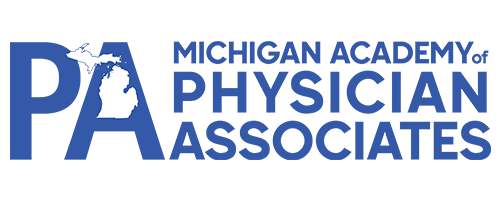Understanding CME
Staying current with the latest medical knowledge leading to better patient outcomes.
Categories of Continuing Medical Education (CME)
Continuing medical education consists of educational activities that serve to maintain, develop, or increase knowledge, skills, and professional performance and relationships that a PA uses to provide services for patients, the public, or the profession. The content of CME is the body of knowledge and skills generally recognized and accepted by the profession as within the basic medical sciences, the discipline of clinical medicine, and the provision of healthcare to the public.
There are various formats of CME available, as well as categories. The CME formats include: “Live Activities” (formal lectures, workshops, conferences, meetings and seminars) where each 15 minutes is designated 0.25 credits, “Enduring Material” (CME activities which are printed, recorded, or accessible online and do not have a specific time or location designated for participants), manuscript review, journal-based CME, test-item writing, performance improvement (PI) and self-assessment (SA).
Category 1
- Regular credit obtained through seminars, conferences, online or mentoring/precepting PA students.
- PI (Performance Improvement) which is active learning and the application of learning to improve your practice. This can be done in partnership with a participating physician. PI-CME involves a three-step process:
- Compare some aspect of practice to national benchmarks, performance guidelines or other established evidence-based metrics or standards.
- Based on the comparison, develop and implement a plan for improvement in that area.
- Evaluate the impact of the improvement effort by comparing the results of the original comparison with the new results or outcomes.
- SA (Self-Assessment) is a systematic review of one's performance, knowledge base and skill set. SA-CME activities often take the form of multiple-choice exams and may also use cases to test the application of knowledge in clinical settings. Learners usually receive immediate feedback and re pointed to key references for further study.
Category 1 CME credits can be audited by NCCPA.
Category 2
The form of CME credit is any medically related activity that enhances the role of a PA (including journal reading, internet clinical research) with credits earned on an hour-by-hour basis.
Category 2 CME credits are not audited by NCCPA.
The available CME credit designated per format for "Live Activities" will need to be approved by either AAPA, ACCME, AAFP or AOA before a PA may claim CME credit for the program. AAPA accepts certificates for educational activities certified for AMA PRA Category 1 credit from organizations accredited by ACCME or a recognized state medical society.
Physician Associates on the 6-year Recertification Cycle
For PAs who are still on the six-year cycle for recertification, every two years (years two, four and six of the certification maintenance cycle), all certified PAs must log 100 CME credits online and pay the logging fee by the end of the two-year cycle. Of the 100 CME credits you must earn and log, at least 50 of the credits must be Cat 1 CME, the remaining 50 credits can be either Cat 1 or Cat 2 or a combination of both. By the end of the sixth year, you will need to pass the PANRE offered by the NCCPA.
Physician Associates on the 10-year Recertification Cycle
NCCPA initiated two new forms of Category 1 CME in 2014, PI- and SA-CME credit to coincide with moving towards a 10-year recertification maintenance process. The new 10-year recertification maintenance process is divided into five two-year CME cycles. During each two-year cycle, 100 credits of CME must be earned, with at least 50 of those credits being Cat 1 (same as the current process). The remaining 50 credits can be Cat 1, Cat 2 or a combination of both.
Example of a 10-year certification maintenance CME cycle (five two-year cycles):
1st CME Cycle: 20 credits of SA-CME and 30 credits of ‘Regular’ Cat 1 CME, with a total of 100 CME credits
2nd CME Cycle: 20 credits of PI-CME and 30 credits of ‘Regular’ Cat 1 CME, with a total of 100 CME credits
3rd CME Cycle: 20 credits of SA-CME and 30 credits of ‘Regular’ Cat 1 CME, with a total of 100 CME credits
4th CME Cycle: 20 credits of PI-CME and 30 credits of ‘Regular’ Cat I CME, with a total of 100 CME credits
[By the end of the 4th CME Cycle, you must have earned 40 Cat 1 CME credits from both SA- and PI-activities]
5th CME Cycle: 100 CME credits, to include a minimum of 50 Cat 1 CME credits and pass the PANRE
These changes in the recertification process are consistent with health care changes that emphasize quality improvement and pay-for-performance measures. These new requirements transition life-long learning from episodic learning to more of a continuous professional development approach where PAs can seek and apply knowledge relevant to their practice and lead to improved patient care. You do not need to demonstrate actual practice improvement in order to receive CME credit, the primary intent is to help you reflect on your own practice.
It is also important to note that the term ‘credits’ and not ‘hours’ is used in reference to PI- and SA-CME activities; the credit calculation considers time, significance and the potential impact the activity will have on your practice.



